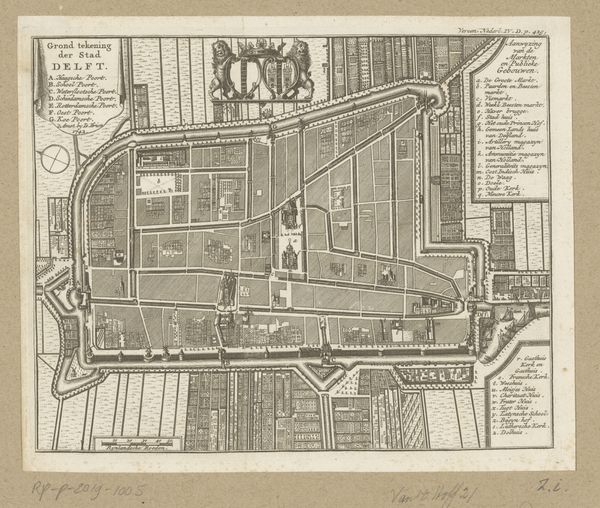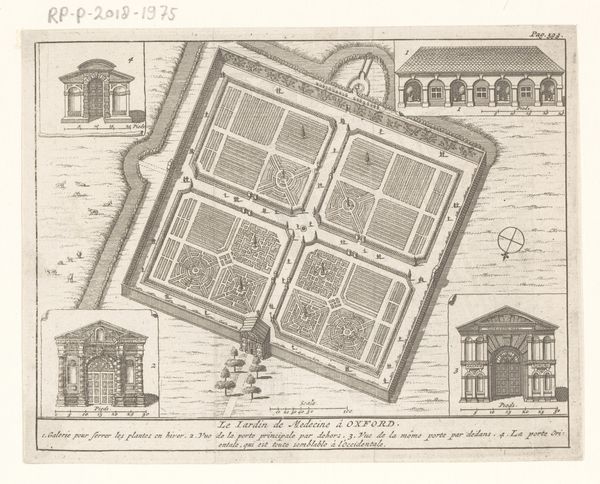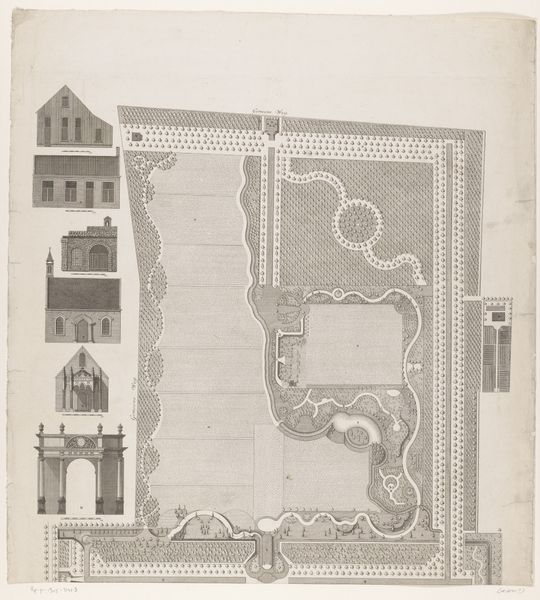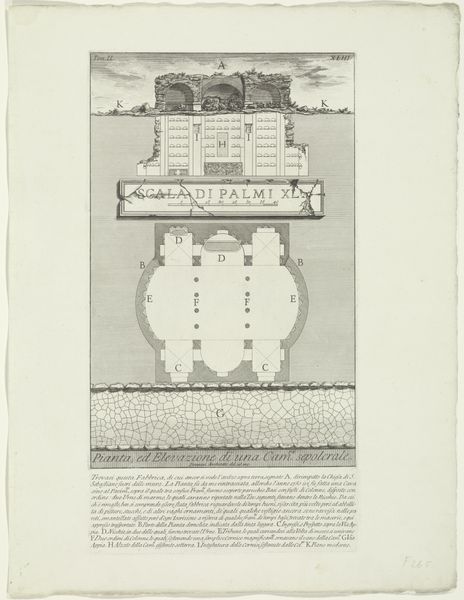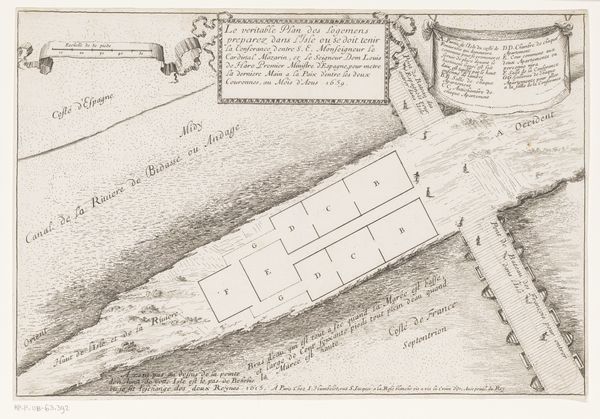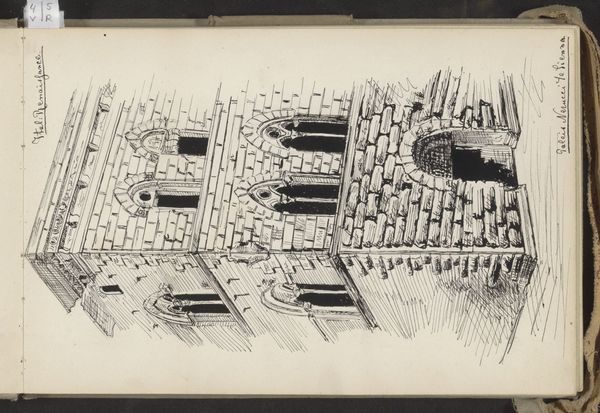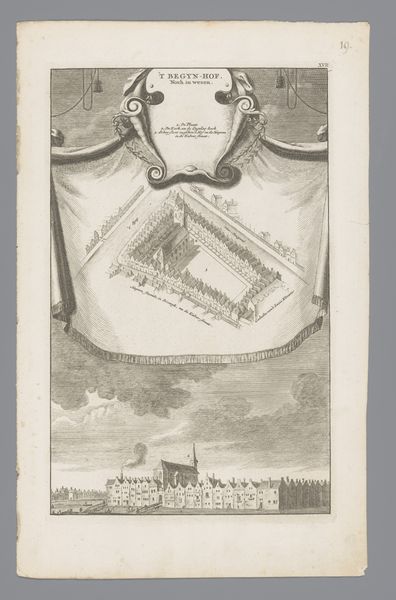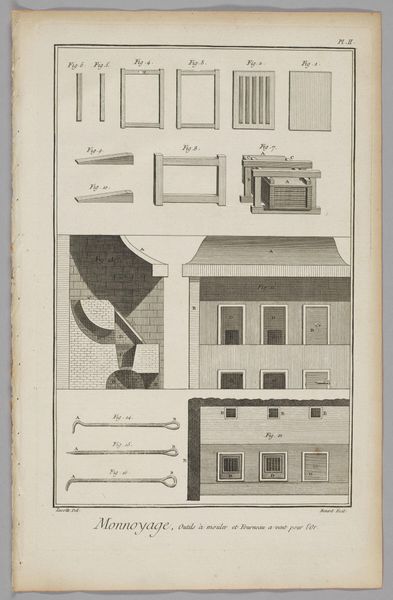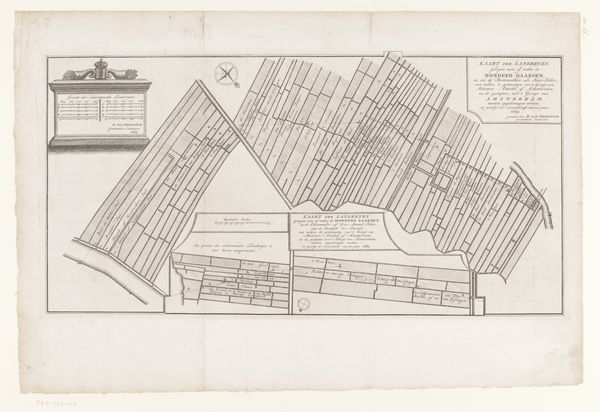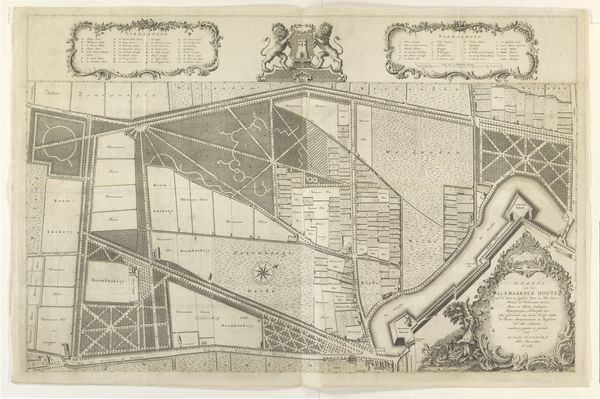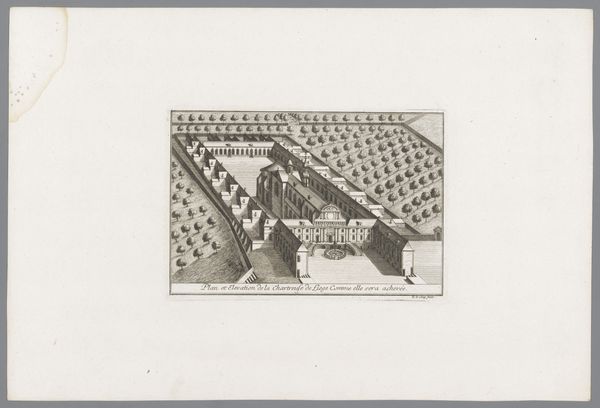
print, engraving
# print
#
geometric
#
line
#
14_17th-century
#
history-painting
#
engraving
Dimensions: height 140 mm, width 211 mm
Copyright: Rijks Museum: Open Domain
Curator: I'm struck by the stark, almost diagrammatic quality of this print. There's a severity to its lines, a meticulousness in its geometry that is immediately arresting. Editor: This is "Plattegrond van de vesting Chielafa," or "Plan of the Fortress Chielafa," an engraving made around 1690 by Jacob Peeters. These visual documents reveal more than just architecture. Curator: Indeed. The strict linearity creates a sense of order, and those dark crenellations against the flat space around them speak to purpose. We have lines indicating depth that don't provide the same tactile feeling of the architecture—the engraving technique itself becomes part of the image’s statement, its graphic impact almost abstract. Editor: These prints served as important historical records. We see how cities were designed and defended—Chielafa's fort emerges during a volatile period when geographical mastery equaled political control. Note the 'Echelle de 300 Toises' included; it provided the map's scale. These are powerful tools that shift power dynamics when circulated. Curator: Precisely! The engraving privileges function; a hierarchy emerges where structural integrity—geometric stability—equals military strength. Look at how the interior buildings, in their reduced form, imply community within that solid exterior, framed as they are within its borders. Semiotics of power in geometric form. Editor: These designs are rarely neutral. The very act of creating and distributing a plan like this underscores how such images operated in early modern political strategies—shaping European perceptions and control abroad. Curator: So, in examining the structure—its angular walls and defined internal spaces—we understand the period's concept of an ideal urban garrison, how fortification determined early life during a turbulent era in geopolitical maneuverings. Editor: And by studying its distribution, we observe its significance to the time’s socio-political fabric: how the ability to accurately illustrate Chielafa became a vital asset of both the artist and political interests of the time. Curator: Thank you, both for your analysis and allowing me to indulge the interplay between structural order and aesthetic power showcased. Editor: Always insightful and with equal thanks; examining a piece from its period and within the design is sure to offer any viewer new understanding.
Comments
No comments
Be the first to comment and join the conversation on the ultimate creative platform.
